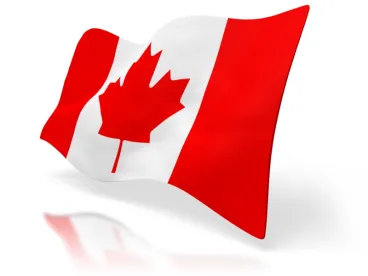On April 1, 2020, Canada’s Minister of Finance outlined the federal government’s plans for a comprehensive wage subsidy plan that, in total, would put as much as $71 Billion (CAD) back into the pockets of participating employers. The stated purpose of the plan is to maximize the ability of employers to maintain employment relationships with their employees during this difficult time.
While no legislation has been introduced concerning the Emergency Wage Subsidy Program, we anticipate it will become law within days. Below is a summary of the government’s plans as announced by the Minister of Finance on April 1, 2020.
Emergency Wage Subsidy Program
What is the Emergency Wage Subsidy?
The Emergency Wage Subsidy is an economic support program that covers up to 75 percent of a capped amount of an employee’s regular wages for up to 3 months. The subsidy is designed to support employers that have experienced a significant reduction in revenue as a result of COVID-19, and is intended to assist employers in avoiding the discharge and layoff of employees during this period of decreased revenue. The Emergency Wage Subsidy is also intended to allow shuttered businesses to restart as quickly and efficiently as possible once economic conditions permit.
The subsidy will cover 75 percent of an employee’s wages up to the first $58,700 for up to 3 months, with a maximum payment per employee of $847 per week. The subsidy will cover base wages and salary. The exact definition of what types of compensation employers may claim through the wage subsidy (e.g., whether commissions or overtime compensation are eligible) has not yet been announced.
Eligibility Criteria for Employers
Employers must be able to demonstrate a monthly gross revenue decrease of greater than 30 percent due to COVID-19. The government has stated that the monthly decrease in revenue will be determined by comparing revenues for March, April, and May 2020, to revenues from the same months in 2019. The government has indicated it intends to develop an alternative approach for employers that did not have operations during the March – May 2019 period, or which are seasonal in nature, such that the 2019 comparison is not appropriate to measure COVID-19 related impact.
All private sector businesses, regardless of size or industry , or whether they are for- or non-profit, are eligible to apply for the Emergency Wage Subsidy provided that they can demonstrate that they experienced at least a 30 percent decrease in revenue due to COVID-19. Publicly-funded businesses will not be eligible.
Employers will be required to attest that they are taking all available measures to pay the remaining 25 percent of employees’ incomes. However, if paying the remaining 25 percent of employees’ incomes is not possible, employers will still be permitted to claim the subsidy, as long as they attest that they have made efforts to pay the remaining 25 percent.
For each month in which a subsidy is claimed, employers must reapply through the Canada Revenue Agency (CRA) and demonstrate the required reduction in monthly revenue.
The government has indicated that it will take approximately six weeks to develop an infrastructure to receive applications for the program, with the first payments to follow shortly thereafter.
Eligibility Criteria for Employees
There is no eligibility criteria outlined for employees. It appears that employees must only be receiving payroll payments, not that they are actively working (i.e., an employee who is laid off or furloughed with pay will likely qualify for the program).
Employees who are in receipt of payroll payments from their employers will not qualify for the Canada Emergency Response Benefit (CERB) as these employees would not be without any income. If employees are eligible for Employment Insurance (EI) regular or sickness benefits, these benefits may be clawed back if the employees continue to receive employment income.
Emergency Wage Subsidy and CERB
The government has not specified whether employers will be able to apply for the Emergency Wage Subsidy to support the continued employment of only a portion of their workforce, while laying off (without pay) or discharging other employees. However, it would seem consistent with the purpose of the Emergency Wage Subsidy to permit employers to arrange for their employees to be supported through different programs, so long as there is no overlap or duplication in benefits.
Application Process for Employers
Evidence of Eligibility
Employers will be required to demonstrate a 30 percent decrease in gross revenue for the relevant application month in 2020, compared with the same month in 2019. For employers that do not have a 2019 comparator month, it is likely that these employers will be able to compare the application month revenue with the prior month’s revenue to demonstrate a decrease.
Employers will also be required to demonstrate that the employees for whom the subsidy is sought have been paid the relevant wages.
Employers must attest that they have done everything they can in order to pay their employees the remaining 25 percent of their salaries.
Employers must reapply and re-attest each month to qualify for the subsidy.
Application Portal
The Canada Revenue Agency (CRA) will soon be launching an online portal through which employers may apply for program benefits. The agency has recommended that employers set up an electronic payment process in order to receive payments more quickly.
The CRA will make payments under this program approximately 6 weeks after employers submit applications. As the initial application period passes, it is expected that these payments will be released sooner.
The previous wage subsidy of 10 percent, which was announced in early March 2020, would have allowed employers to deduct the 10 percent from their remittances to CRA. This wage subsidy will not work through deductions from remittances; instead, it will be paid to employers through payments from the CRA after applications are processed and approved.
Previous 10 Percent Small Business Wage Subsidy
According to the Minister of Finance’s comments during an April 1, 2020, public address, the existing 10 percent wage subsidy for qualifying small businesses will continue to apply even after this larger wage subsidy program is put into place.
While the above information regarding the Emergency Wage Subsidy Program is current as of April 1, 2020, because the current health crisis is dynamic, we expect changes and developments on this and other emergency measures.






 />i
/>i

